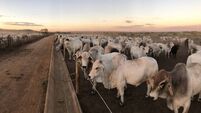Chinese appetite for milk continues to soar
Demand for China’s 1.35bn population, and a shrinking global dairy supply, has held dairy prices at high levels this year. China’s appetite for milk and dairy products has been rapidly accelerating in recent years, as its consumers become wealthier and adopt a more westernised diet.
To meet the demand, reliance on dairy imports has grown 20% to 30% per annum in the past two years, leaving China to import almost 20% of its overall milk products.
The expansion of China’s own production has stalled, faced with multiple challenges in trying to meet growing demand.
“Milk production in China is struggling to grow as a result of small-scale farmers exiting the industry and large-scale farms still being under development,” says Rabobank analyst Hayley Moynihan. Chinese dairy farmers are about 60% less than 100 cows per farm.
Government controls to improve the supply chain and strengthen raw milk quality, combined with the surging production costs of feed and labour, have forced many backyard dairy farmers out of the market.
The share of production on large-scale farms, with more than 500 cows, grew rapidly from 17% of total milk production in 2008 to 27% in 2011.
“It is likely to be at least two to three years before the pace of large-scale dairy farm expansion in China outweighs the current contraction in ‘backyard’ sources and leads to a reduction in import growth.”
Consequently, imported dairy products and ingredients will continue to play an increasingly important role.
Irish exporters are in line to benefit, because demand growth is expected to prompt Chinese buyers to seek out more diverse import options, instead of continuing to rely on one or two key product origins (such as New Zealand) — according to analysis by the Rabobank experts.










